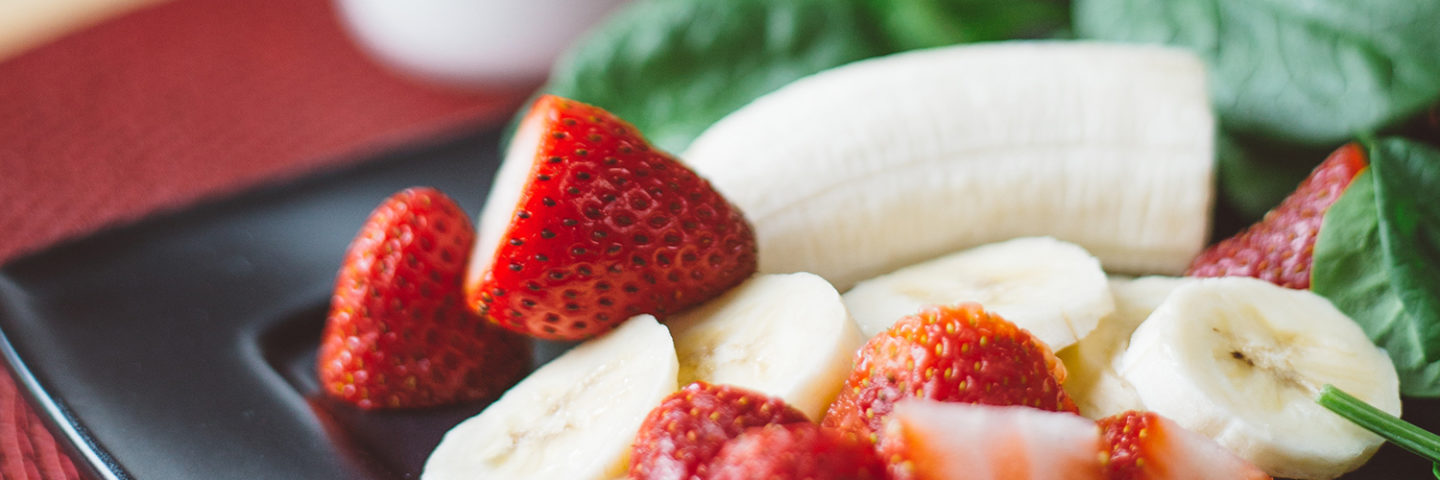
Don’t Fear the “Dirty Dozen”
A dietitian friend recently told me a story about one of her nutrition counseling clients. When discussing fruits and vegetables, he told her he only ate organic produce. When she asked why, he replied, “Honestly, I just don’t want to have to wash my produce.” He thought the only reason to wash fruits and vegetables was to remove pesticide residues and he assumed that organic would have none.
Much of the fear of pesticide residues on non-organic produce is driven by the Environmental Working Group’s (EWG) annual Dirty Dozen list. This list garners headlines like, “Kale Is One of the Dirtiest Vegetables” and “Are You Eating Pesticide-Laden Produce?” It is a thinly veiled attempt to scare hard-working, cash strapped Americans away from buying conventional fruits and vegetables and instead choosing higher-priced, organic produce. Taking a closer look beyond the sensational headlines, there are a few things you need to keep in mind.
First, the main reason to wash fruits and vegetables is to get rid of dirt and bacteria. Produce is grown in fields with soil. Also, just think of the number of hands that have touched your produce from the time it leaves the field until it gets into your kitchen. From farmworkers to produce packers to supermarket employees to other customers, many bacteria laden hands have landed on your fruits and veggies.
Second, pesticide residues on conventionally grown produce are tested annually by the United States Department of Agriculture (USDA), with the results published in their Pesticide Data Program Annual Summary. In the most recent 2017 report, USDA found that over 99% of the samples tested had residues well below the tolerances established by the Environmental Protection Agency and, of these, 53% had no detectable pesticide residue at all.
And third, contrary to popular belief, organic farmers do use pesticides. Many are natural pesticides (but still kill bugs and weeds) like sulfur, bicarbonate, copper and vinegar but also include synthetic pesticides approved for organic use. While organic produce is not regularly tested for pesticide residues, in 2010 the National Organic Program worked with the USDA to evaluate pesticide residues on 571 domestic and foreign fruit and vegetable samples bearing the USDA organic seal. The report revealed that 96% of the samples tested met the USDA organic regulations, with 57% showing no detectable residues and 39% with residues less than 5% of the EPA allowable level.
The fact is you have nothing to fear from eating any type of produce. All pesticide residues on fruits and vegetables, whether organically or conventionally grown, are extremely low and well below any level that could put you at risk. The December 2018 news release from the USDA for their most recent report was headlined, “USDA Releases 2017 Annual Pesticide Data Program Summary, U.S. Food Supply is Among the Safest in the World.”
And according to University of California Berkeley Emeritus Professor of Biochemistry and Molecular Biology, Dr. Bruce Ames, 99.99% of the pesticides we eat are naturally present in plants to ward off insects and other predators. That means only 0.01% of ingested pesticides are synthetic.
So how does the Environmental Working Group come up with the data in its report that leads consumers to assume their produce is laden with pesticide residues? Believe it or not, they use the data in the USDA report mentioned above! Unfortunately, they misrepresent the data. How? They rank the fruits and vegetables in order of the pesticide residues found, from the highest to lowest amounts. Then they label the top twelve as “The Dirty Dozen.” But, as I explained earlier, the residue levels are extremely low and 99% of the samples tested fell well below the tolerance levels and 53% had no detectable pesticide residues. And not one but two PhD toxicologists have debunked the methodology used by the EWG to create this list in their research article in the Journal of Toxicology.
To put the EWG’s method into perspective, consider this comparison to National Merit Scholars. Most of us know these are very smart high school students who scored highly on the qualifying PSAT/NMSQT exam. So, imagine taking the list of National Merit Scholars for this year and ranking them according to their exam scores from highest to lowest and then taking the bottom twelve and calling them “The Dumbest Dozen.”
If you look deep into the EWG website you’ll find this disclaimer hidden in the Q&A section, “The health benefits of a diet rich in fruits and vegetables outweigh the risks of pesticide exposure. Eating conventionally grown produce is far better than skipping fruits and vegetables.” Of course, this statement never makes it into the articles with the sensational headlines. The EWG is not a research or academic institution with independent scientists. It is an activist group with some funding from the organic industry. In a survey of the scientist members of the Society of Toxicology, 79% say EWG overstates the health risk of chemicals.
Want to find out how many servings of a particular fruit or vegetable you could eat and still not have any adverse effects from pesticide residues? Check out the Pesticide Residue Calculator on the Safe Fruits and Veggies website. It turns out an adult woman would have to eat 13,204 servings of blueberries or 4,159 servings of conventional lettuce or 3,344 servings of organic lettuce in one day without any effect, even if these had the highest pesticide residues level ever recorded by USDA for blueberries or lettuce.
Over 90% of people in the U.S. don’t eat enough fruits and vegetables so we should not be doing anything to discourage folks from enjoying any type of produce they like to eat, whether it is conventional, organic, fresh, frozen, canned, dried or juice. They all count toward your daily recommended fruit and veggie intake, are nutrient-rich and make you look and feel good. So, relax and enjoy the taste and fun of filling half your plate with fruits and vegetables.


